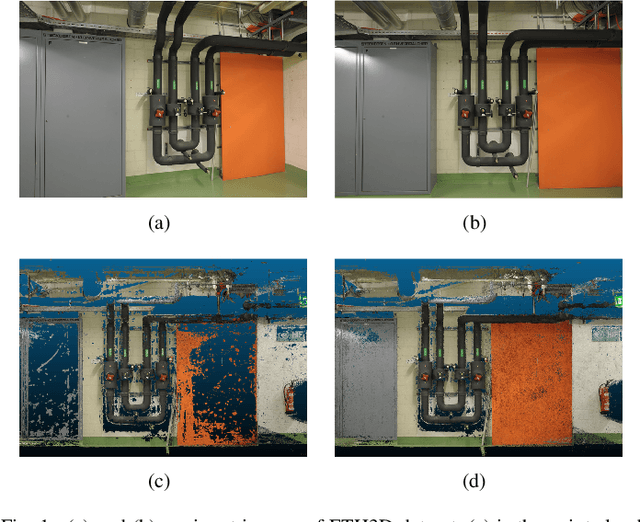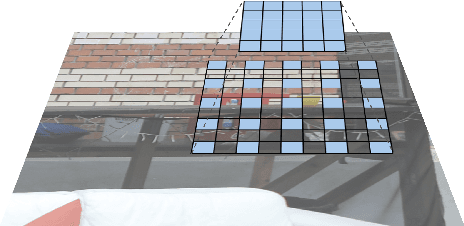Yunan Zheng
PHI-MVS: Plane Hypothesis Inference Multi-view Stereo for Large-Scale Scene Reconstruction
Apr 13, 2021



Abstract:PatchMatch based Multi-view Stereo (MVS) algorithms have achieved great success in large-scale scene reconstruction tasks. However, reconstruction of texture-less planes often fails as similarity measurement methods may become ineffective on these regions. Thus, a new plane hypothesis inference strategy is proposed to handle the above issue. The procedure consists of two steps: First, multiple plane hypotheses are generated using filtered initial depth maps on regions that are not successfully recovered; Second, depth hypotheses are selected using Markov Random Field (MRF). The strategy can significantly improve the completeness of reconstruction results with only acceptable computing time increasing. Besides, a new acceleration scheme similar to dilated convolution can speed up the depth map estimating process with only a slight influence on the reconstruction. We integrated the above ideas into a new MVS pipeline, Plane Hypothesis Inference Multi-view Stereo (PHI-MVS). The result of PHI-MVS is validated on ETH3D public benchmarks, and it demonstrates competing performance against the state-of-the-art.
Learning Structral coherence Via Generative Adversarial Network for Single Image Super-Resolution
Jan 25, 2021


Abstract:Among the major remaining challenges for single image super resolution (SISR) is the capacity to recover coherent images with global shapes and local details conforming to human vision system. Recent generative adversarial network (GAN) based SISR methods have yielded overall realistic SR images, however, there are always unpleasant textures accompanied with structural distortions in local regions. To target these issues, we introduce the gradient branch into the generator to preserve structural information by restoring high-resolution gradient maps in SR process. In addition, we utilize a U-net based discriminator to consider both the whole image and the detailed per-pixel authenticity, which could encourage the generator to maintain overall coherence of the reconstructed images. Moreover, we have studied objective functions and LPIPS perceptual loss is added to generate more realistic and natural details. Experimental results show that our proposed method outperforms state-of-the-art perceptual-driven SR methods in perception index (PI), and obtains more geometrically consistent and visually pleasing textures in natural image restoration.
 Add to Chrome
Add to Chrome Add to Firefox
Add to Firefox Add to Edge
Add to Edge